Introduction
Melaleuca (Melaleuca quinquenervia) is a well-known tree native to Australia. It was introduced into the United States in 1887 for use in landscaping, agricultural windrows, highway plantings, and soil stabilization. Although it initially proved to be useful for many of these purposes, it quickly began to spread from plantings and invaded many natural areas of southern Florida. Aided by wind-dispersed seed, aggressive growth, and a lack of natural enemies, melaleuca infested almost 500,000 acres by 1994. Extensive stands occurred in the Everglades Big Cypress National Preserve, and Arthur R. Marshall Loxahatchee National Wildlife Refuge.
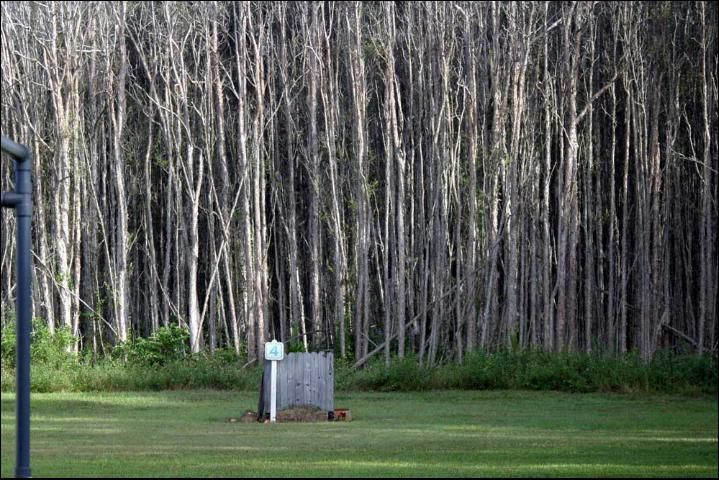
Melaleuca forms dense stands that completely transform the character of natural habitats. It displaces native plant communities and associated wildlife, disturbs natural water flow, and alters soil conditions. Areas once home to endangered species such as the Cape Sable seaside sparrow (Ammodramus maritimus mirabilis), wood stork (Mycteria americana), and Florida panther (Puma concolor coryi) are no longer suitable because of melaleuca invasion. When fire occurs, melaleuca trees burn at extremely high temperatures, causing additional environmental damage. Melaleuca may have a strong negative impact on migrating birds, which depend on native plants for seeds, fruits, and insects during migration. In addition, dense melaleuca stands can strongly restrict the use of parks and recreation areas, negatively impacting ecotourism in Florida.
Federal and state agencies have cooperated to identify biological control agents and develop herbicide technology that can be used against melaleuca. Over a 20-year period beginning in the late 1990s, Florida agencies spent more than $30 million controlling melaleuca. The South Florida Water Management District (SFWMD) now has melaleuca under maintenance control in the Water Conservation Areas around Lake Okeechobee, and crews routinely conduct spot treatments to prevent a melaleuca resurgence, using ground application of herbicides. Additionally, introduced biological control agents (insects) reduce resurgence in these areas by strongly suppressing seed production and seedling growth. Successful reduction of the melaleuca problem in Florida has depended on a multifaceted management approach called IPM or integrated pest management. IPM incorporates multiple methods of control, including biological control, mechanical control, and herbicides. Public participation is key to successful integrated management of melaleuca on public lands. Melaleuca trees not controlled on private and commercial property are a constant source of windblown seed that can infest new areas and reinfest natural areas on public lands where trees have already been controlled. This publication provides information to empower Florida citizens to protect the State's natural areas from melaleuca.
How to Recognize Melaleuca
- Melaleuca is an evergreen tree that may grow to 100 feet in height and may have single or multiple trunks.
- The bark is thick, pale, papery, and easily peels (Figure 2).
- Leaves are simple, alternate, narrowly lance-shaped and grow up to 4-inches long by ¾-inch wide. They are leathery with three prominent veins and emit a smell of camphor when crushed (Figure 3).
- Flowers are bottlebrush-shaped and creamy white; they grow up to 6 inches in length and can occur throughout the year but primarily from November through February with a peak in December (Figure 4).
- Seeds develop within persistent, woody capsules clustered on stems. Each capsule may hold 200 to 300 tiny seeds (Figure 5).
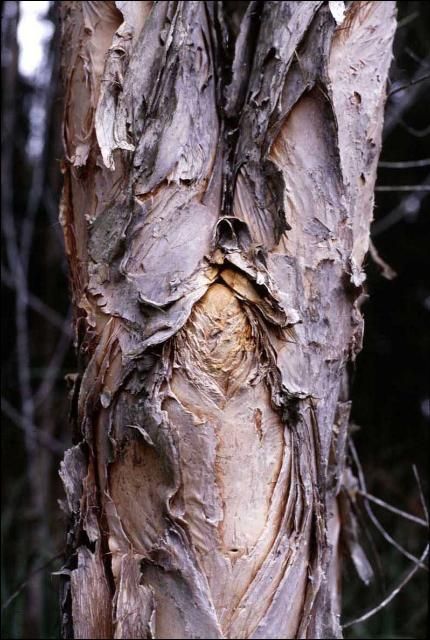
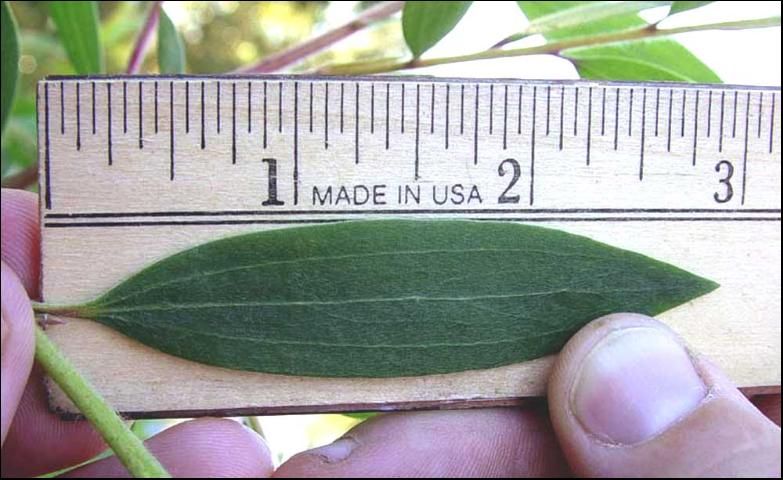
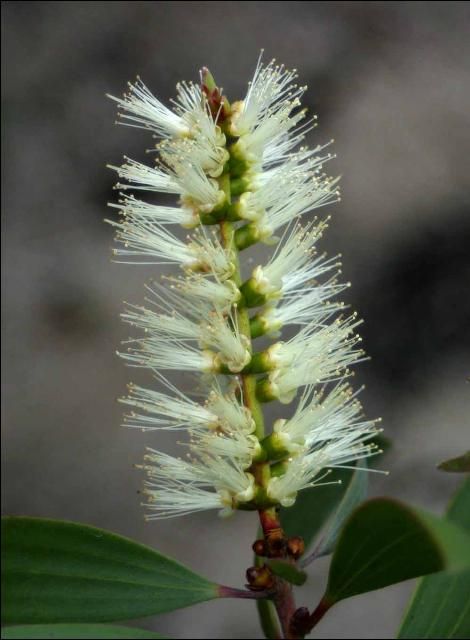
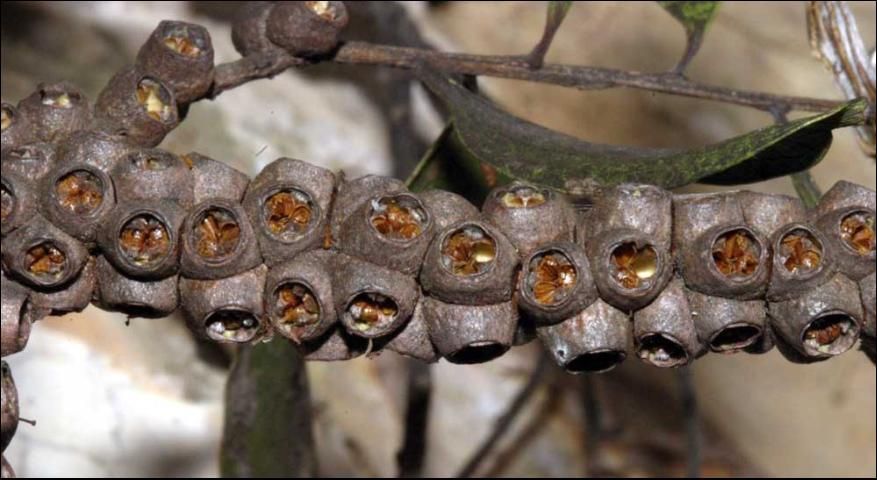
Integrated Management of Melaleuca
Biological Control
Biological control is using a pest's natural enemies to lower its population. Melaleuca was introduced into Florida without any of the insects or pathogens from Australia that attack the tree and help to limit its numbers in its native range. Researchers have studied insect populations in Australia and identified many species that feed on melaleuca. However, of those insects found to significantly damage melaleuca, only those proven to be non-harmful to desirable plants have been released in the United States.
Three insects have shown promise as biological control agents: the melaleuca weevil (Oxyops vitiosa) (Figure 6) released in 1997, the melaleuca psyllid (Boreioglycaspis melaleucae) (Figure 7) released in 2002, and the melaleuca stem-gall midge (Lophodiplosis trifida) (Figure 8) released in 2008. USDA researchers released the bud-gall fly (Fergusonina turneri) in 2005, but it failed to establish. Although none of these insects will kill mature melaleuca trees, they can significantly reduce tree vigor, seed production, and seedling establishment. The insects have been very effective where previous herbicide treatments have eliminated all large melaleuca trees and only newly recruited seedlings and saplings occur.
Following introduction, these biological controls have spread throughout most of the range of melaleuca in Florida. Conditions such as extreme cold and standing water can reduce their populations, especially the weevil, which completes its life cycle in the soil. However, insect populations generally rebound in melaleuca-infested areas when favorable conditions resume.
Another insect that attacks melaleuca is the lobate lac scale (Paratachardina lobata lobata) (Figure 9). However, lobate lac scale should not be confused with biological control agents deliberately released to control melaleuca. This is an invasive insect native to India and Sri Lanka that was first found in Broward County in 1999. Evidence of the lac scale includes a dark, sooty mold covering leaves and high numbers of minute, bark-like bumps or scales on twigs. This insect is not only destructive to melaleuca but also to many ornamental plants and native vegetation. Information on how to control lac scale in the landscape can be obtained from your local UF/IFAS Extension office (to find your local office, visit https://sfyl.ifas.ufl.edu/find-your-local-office/).
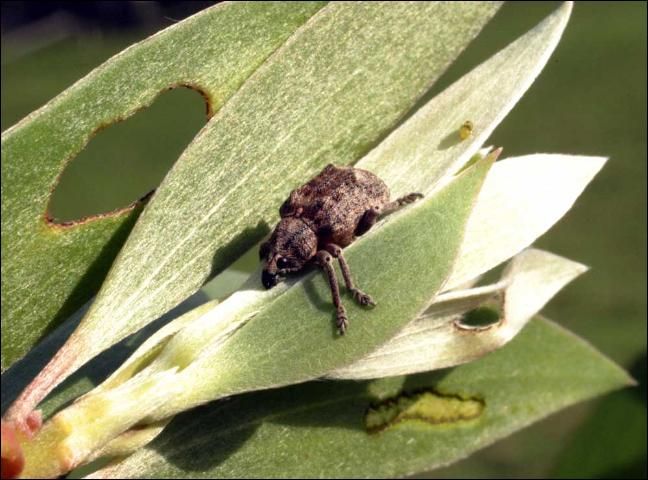
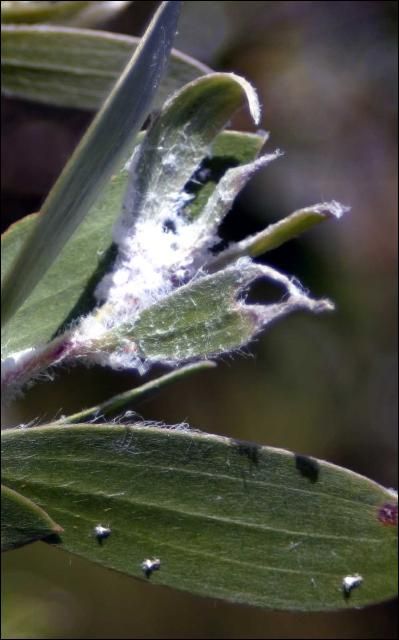
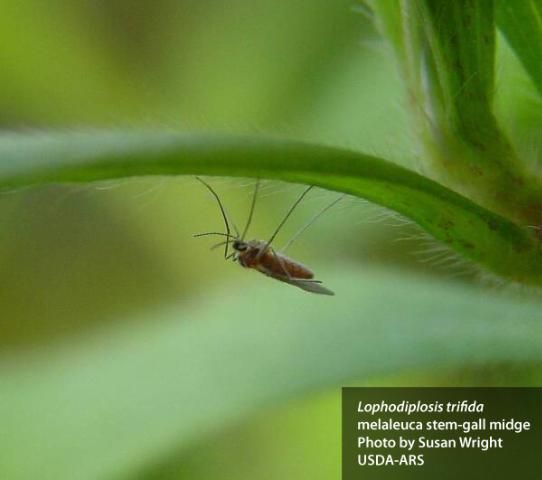
Credit: Susan Wright, USDA-ARS
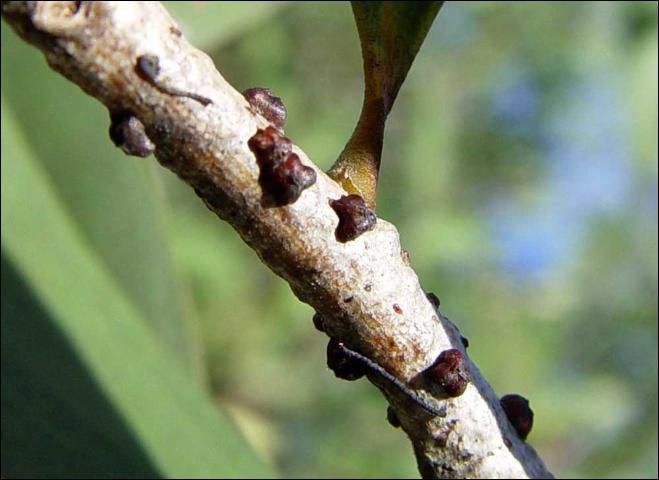
Mechanical Controls
Logging equipment, heavy-duty mowing equipment, and skid steer mulchers are sometimes used for melaleuca removal. This method is usually used during land clearing for development and for removal along canals, roadsides, and utility rights-of-way. Mechanical removal is not widely used for melaleuca control in natural areas as it is expensive and generally causes considerable soil disturbance.
Herbicides
Herbicides are used for killing individuals or populations of melaleuca trees. To control large, dense stands of mature melaleuca trees, state and federal agencies have applied herbicides by helicopter with the active ingredients glyphosate and imazapyr. Large-scale helicopter applications have been used less frequently as melaleuca populations have been reduced to manageable levels that only require ground applications by professional spray crews.
Glyphosate and imazapyr are also applied with handheld equipment to control seedling and sapling trees. Both glyphosate and imazapyr can kill native nontarget plants when leaves come in contact with these herbicides, and imazapyr can also kill plants when it comes into contact with roots. Therefore, helicopter applications are only made to dense stands of melaleuca where few nontarget plants exist. When applying herbicide to seedlings and saplings in areas where desirable vegetation exists, care must be taken to apply the herbicide only to the melaleuca.
Individual trees can be killed by applying herbicide using a technique known as "frill-and-girdle" (Figure 10). Frill-and-girdle involves cutting away the tree's thick bark and applying a herbicide mixture of imazapyr and glyphosate to the living portion of the trunk (cambium), just inside the bark and just outside of the wood (Figure 11). This technique leaves the trees standing and can be unsightly and potentially hazardous when trees decay and fall.
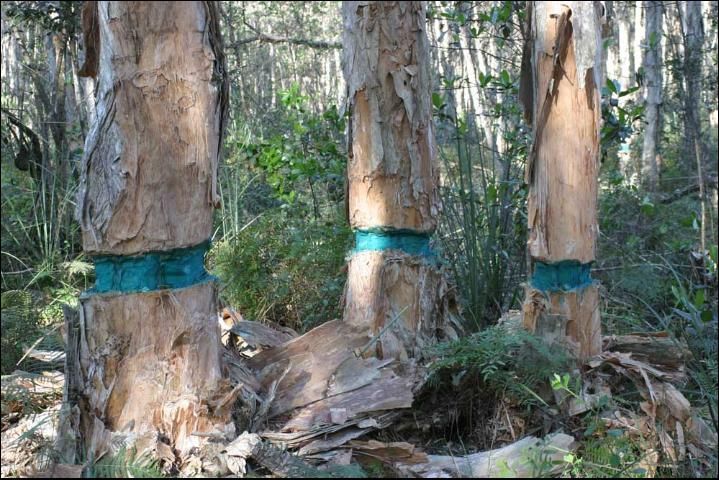
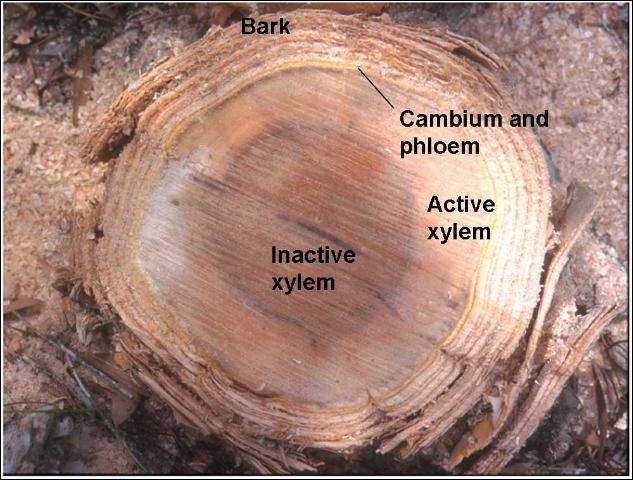
When it is undesirable to leave trees standing, they can be felled, but regrowth will occur from the stump. To prevent regrowth, herbicide is applied to the freshly cut surface of the stump (Figure 12). This method is labor-intensive, but has the advantage that trees are not left standing. Land management agencies usually use an herbicide tank mix of products that contain both glyphosate and imazapyr for treating melaleuca stumps. Imazapyr is readily absorbed by plant roots and can kill desirable plants whose roots are close to the treated stumps. Therefore, it is not recommended for use in landscapes.
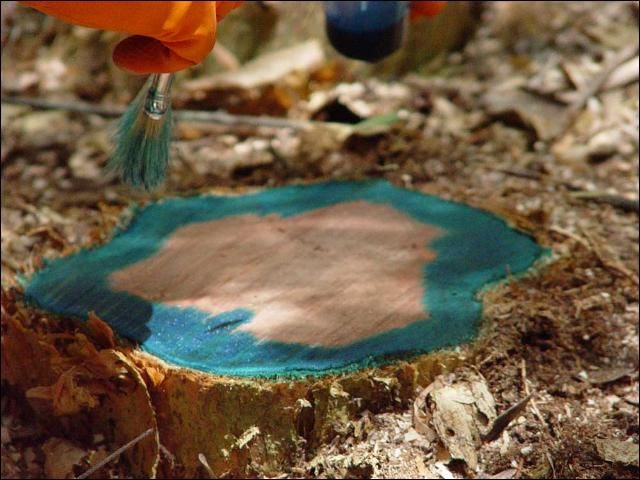
Control Methods for Homeowners
Private property owners can use similar control methods to those used by professional land managers for melaleuca but at a different scale. Property owners with large numbers of melaleuca trees are advised to consult a professional vegetation management company or a local agency for assistance. Property owners with a small number of trees will most likely cut the trees down or have them cut down by a professional tree trimming company. Grinding the stumps may prevent regrowth but missed stumps may resprout quickly. Treating the stumps with herbicide to prevent regrowth is less laborious and less expensive, results in less soil disturbance, and provides consistent results.
Property owners can use glyphosate- or triclopyr-containing herbicide products available for purchase at retail garden stores. These products are conveniently packaged for homeowner use and are available in small quantities if homeowners only have a few stumps to treat (Table 1). A product containing 30.8% glyphosate will provide more consistent results than a dilute product of glyphosate or triclopyr (e.g., 8.8%). Stumps should be cut level as close to the ground as possible. The herbicide mixture should be applied and concentrated near the living portion of the stump (cambium), located just inside the bark. Herbicide should be applied as quickly as possible after felling the tree (at least within five minutes). If a large number of stumps are treated, herbicide should be applied when rainfall is not expected for 24 hours. If only a small number of stumps are treated, they can be covered with waterproof material to prevent rainfall from washing the herbicide off the stump.
What You Can Do
- Learn to recognize melaleuca and how it is controlled.
- If you have melaleuca on your property, remove it.
- Dispose of melaleuca debris where it will be incinerated or buried deep in a landfill, or where seedlings and vegetative growth can be destroyed.
- Inform others about the problems caused by having melaleuca on their property and encourage them to remove it.
Additional Information
- UF/IFAS Extension publications—https://edis.ifas.ufl.edu
- UF/IFAS Center for Aquatic and Invasive Plants—http://plants.ifas.ufl.edu
- Florida Wildlife Conservation Commission—http://myfwc.com/wildlifehabitats/invasive-plants/
- Florida Invasive Species Council—https://www.floridainvasives.org/
- http://entnemdept.ufl.edu/creatures/BENEFICIAL/FLIES/melaleuca_gall_midge.htm
Citations are omitted from this publication but a comprehensive literature review of melaleuca is presented in:
- Serbesoff-King, K. 2003. "Melaleuca in Florida: A Literature Review on the Taxonomy, Distribution, Biology, Ecology, Economic Importance and Control Measures." J. Aquat. Plant Manage. 41:98–112.
Related Ask IFAS Publications
- Help Protect Florida's Natural Areas from Non-Native Invasive Plants: https://edis.ifas.ufl.edu/ag108
- Integrated Management of Nonnative Plants in Natural Areas of Florida: https://edis.ifas.ufl.edu/wg209
- Biological Control Containment Facilities in Florida: https://edis.ifas.ufl.edu/in509
- Classical Biological Control of Weeds with Insects: Melaleuca Weevil: https://edis.ifas.ufl.edu/in172
- Melaleuca Snout Beetle, Melaleuca Weevil (unofficial common names), Oxyops vitiosa (Pascoe) (Insecta: Coleoptera: Curculionidae): https://edis.ifas.ufl.edu/in368
- Lobate Lac Scale, Paratachardina lobata lobata (Chamberlin) (Hemiptera: Sternorrhyncha: Coccoidea: Kerriidae): https://edis.ifas.ufl.edu/in471
- La Escama Lobada de Laca, Paratachardina lobata (Chamberlin) (Insecta: Hemiptera: Sternorrhyncha: Coccoidea: Kerriidae): https://edis.ifas.ufl.edu/in586